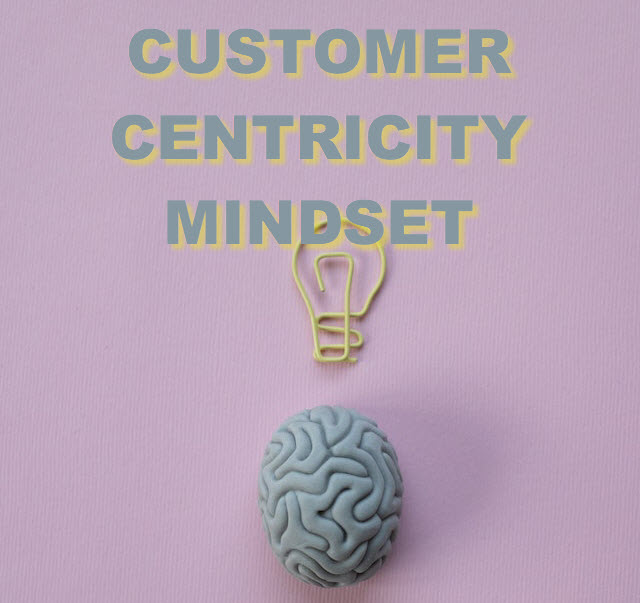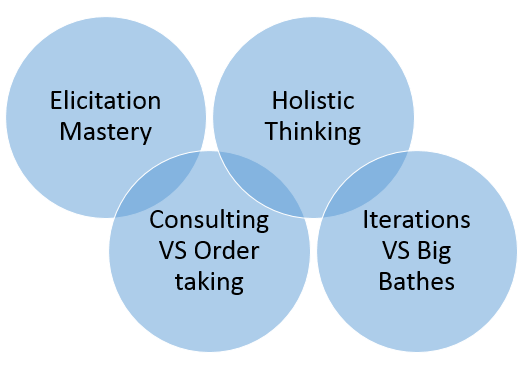
As a business analyst you will contribute in a change that will create value. The perception of value is one of the most important things you should have in mind before proceeding to recommending solutions.
A common issue in the solutions that we provide, although they may be functionally adequately, they are not perceived as value adding from the end users. So, enterprise software can be really awesome and yet it's often not.
There is a famous paradox, usually called the Solow Computer Paradox, for Robert Solow. He has been quoted saying, you can see the computer age everywhere but in the productivity statistics.
This is a very powerful claim. Very controversial, but it is not completely unjustified. In fact, when you look at many disappointed end users that use advanced technology solutions that do not like to use.
It is more than important the modern business analyst to focus on the end to end customer experience. A BA shall act as a consultant that listen to the pains of the end users and is dedicated in solving them through providing solutions that will alleviate those pains.
How do you define a customer-centric mindset you can actually execute? Below are some elements of the customer – centricity mindset:

1. Elicitation mastery means that a business analyst is not just collecting requirements. Contrary the BA tries through a dialectic approach to educe the real customers’ needs and to understand the deep root causes instead of the symptoms. Lacking mastery of elicitation techniques is contributing in requirements that do not reflect customer wishes precisely or if the requirements are described in an imprecise way and thus allow for several interpretations.
2. Holistic thinking means the ability of the BA to see the wholeness and not to have a myopic view of the specific solution. How the solution will be used in the context is something that must be answered before any solution is proposed. Having in mind except the technology the people and the processes that the solution will affect will navigate the solution proposals. A holistic approach increases the chances of the adaptation of the solution and the realization of promised benefits. Do not underestimate that most of the time the introduction of a new solution requires massive change in how an organization thinks and how it functions.
3. Consulting approach means that you are acting as a problem solver. When you are working for a customer usually will find yourself to be an order taker and executor. However, this BA mindset will degrade your role as a business analyst, as a problem solver and as a change maker. The more you try to act as a consultant to the customer showing genuine interest in the success of the project the more are the chances the final solution to be perceived by the customer as value adding.
4. Iterations means you are willing to listen to the customer voice. To collect insightful feedback, to adapt the solution and then check again. This continuous feedback loop will give you the necessary information you want concerning the value that the final solution will provide.
Below you may find some tools that can contribute towards customer – centricity approach in your analysis:
Business Model Canvas
Business model canvas is an attempt to think about different aspects that build the wholeness. It is an attempt to consider the different factors that makes an organization provide value. Business model canvas will help you have some structure to understand what's valuable. It will give you nice clear linkages to success criteria. And it allows you to drive forward and backward to and from discussable designs that are clearly link to the company's business model and their strategy.
For more information concerning the business model canvas you can click here: Business Model Canvas – Download the Official Template (strategyzer.com)
AIDA framework
Although this model is mainly developed from marketing purposes it can help the business analyst to organize and structure his thoughts concerning what motivates the users and how they define value. AIDA framework is a helpful acronym that triggers the business analyst to think about the features of a solution that will make the customers act towards the final product (i.e. using it) as well as to ensure long tern usage by ensuring the viability of the benefits and perceived value.
AIDA for Awareness, Interest and Action. There is also and evolution of this acronym to AIDAR that stands for Awareness, Interest, Desire, Action and Retention.
The hierarchy in AIDA model mirrors the crucial steps for customers– with each step, fewer consumers proceed toward final action for your product based on the expected vs realized value.
Prototyping & Experiments
Through prototypes and experiments you can gain quick and accurate feedback before you have fully developed a solution. In the modern business environment, the continuous feedback that leads to adaptation is crucial. Incremental approach, where possible, can lead to really happy customers. Prototyping is an awesome design tool and makes a lot of sense, because it'll help us understand users' motivation and product viability.
Its wiser any idea concerning the solution approach to be tested against observations, rather than intuition. As a business analyst never underestimate the voice of the customers, their concern, and their improvement suggestions. When you embrace the loop of feedback and improvement , you open your eyes to new possibilities, and you cultivate your customer – centricity mindset.
Customer-centricity captures the essence of what we seek in the way we collaborate with customers. It’s a way of thinking and acting that embraces the realization of value through designing solutions that covers the actual customer needs. It is not a specific set of practices or behaviors that can be adopted. It is a way of thinking and acting that involves continually seeking alignment between perceived and actual value. As such, specific practices will change as conditions and skills change. Different individuals and teams face different challenges. Their path toward customer – centricity will be different. There is no “magical” set of techniques, roles, or processes that makes this easier. It’s just a professional modus vivendi that makes sure making sure that stakeholder’s expectation will be met in the final solution deployment.
 Author: George Sioutzos, Business Analyst, Business Author
Author: George Sioutzos, Business Analyst, Business Author
George Sioutzos is working in the business consulting industry as a business analyst. He has experience in projects from different sectors. He holds a BSc in Management Science and Technology from Athens University of Economics and Business and Msc in International Business & Management. Numerous articles about business and technology issues have been published in most reputable Greek and foreign media.